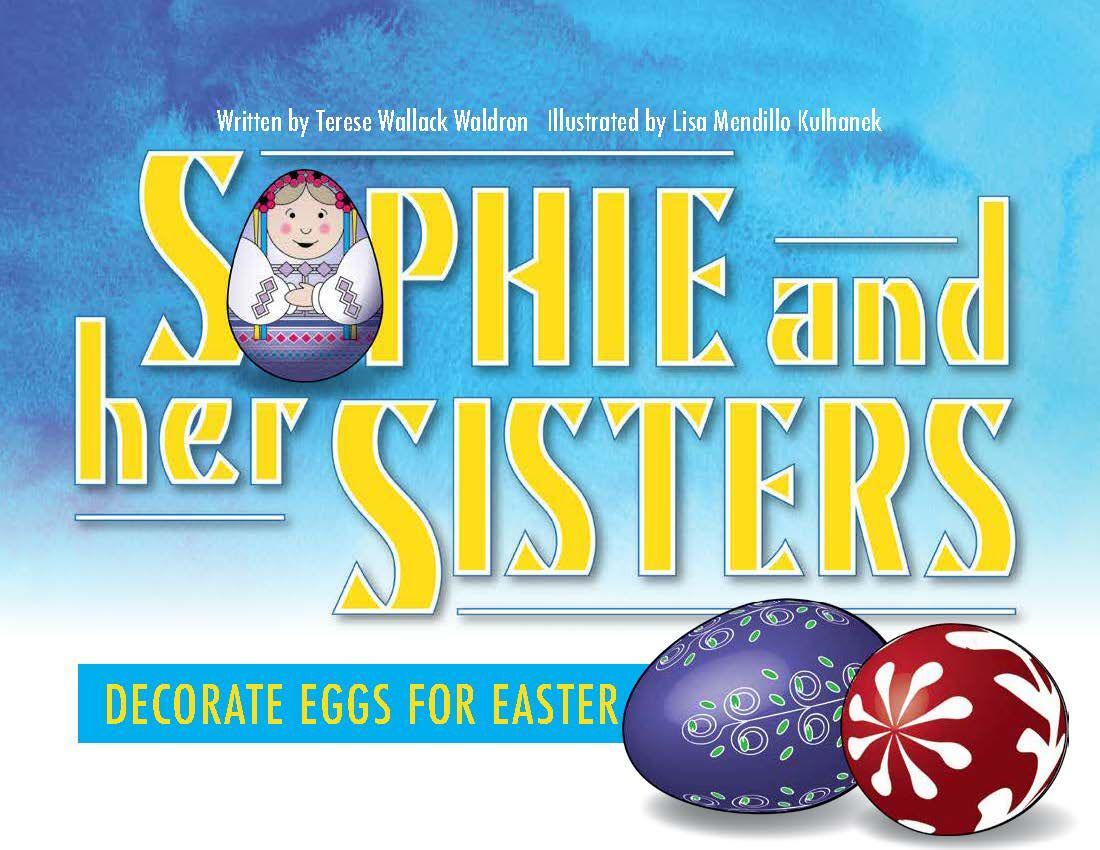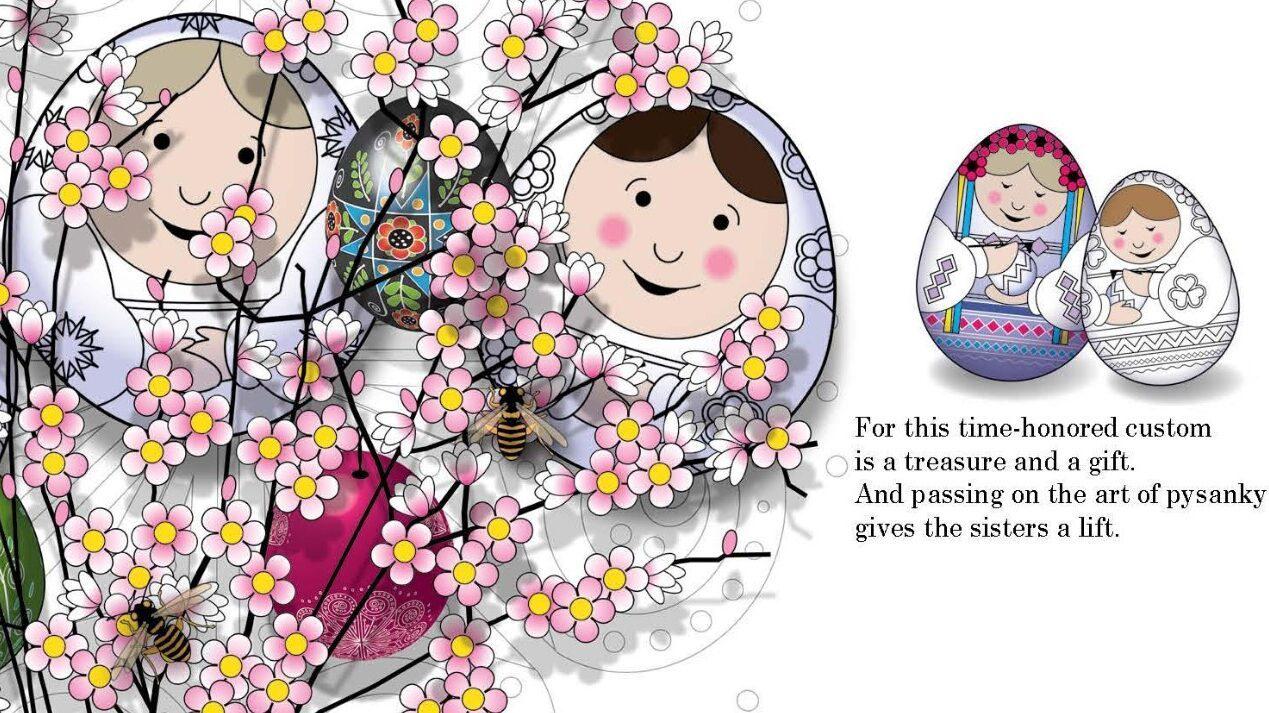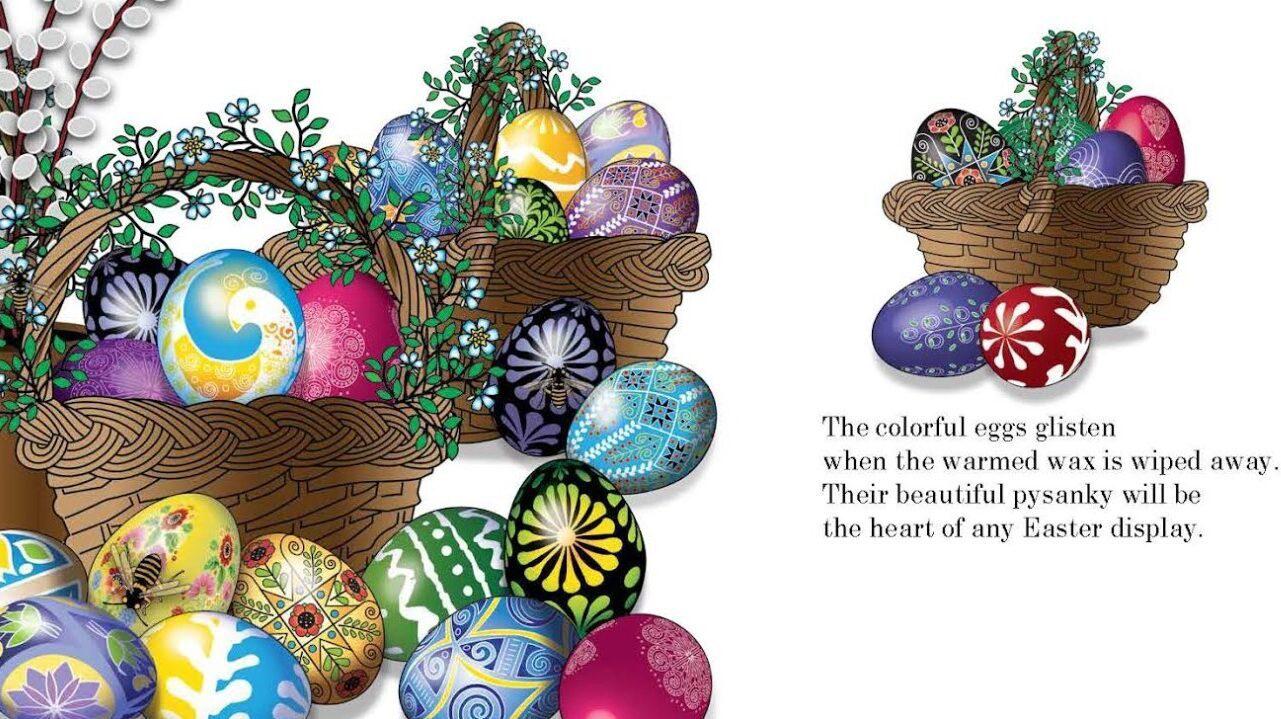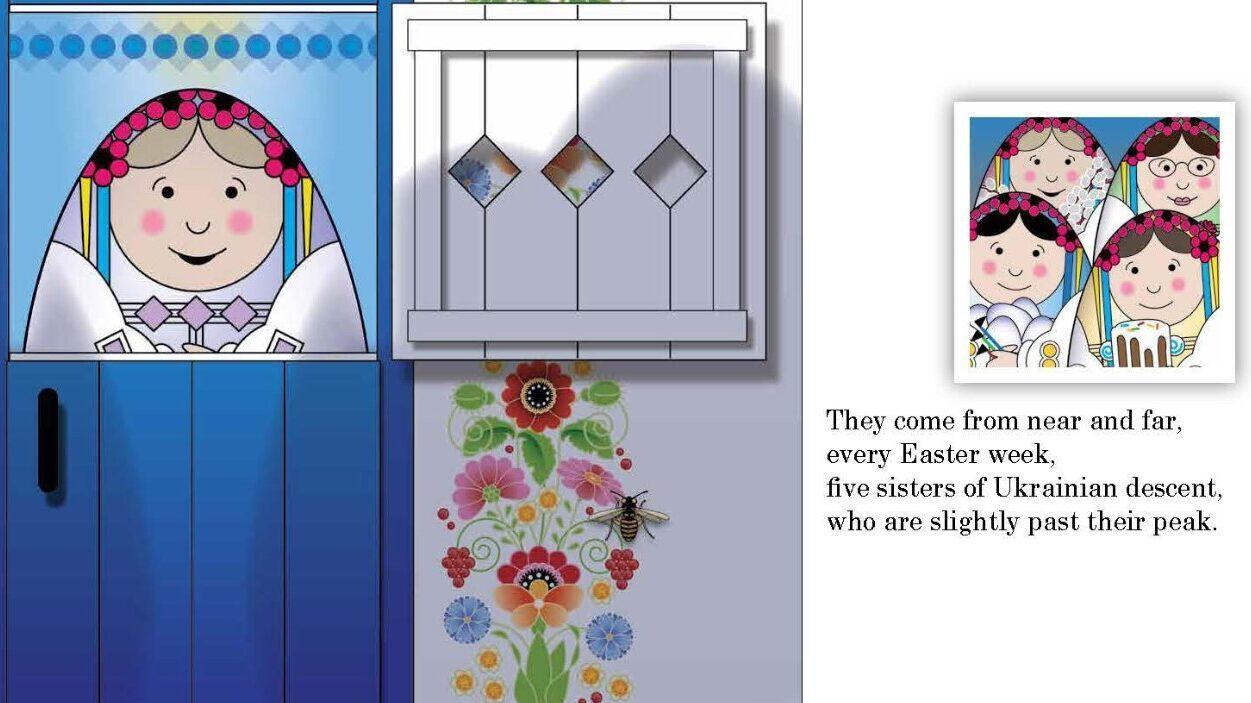For One Alum, Ukrainian Pysanky Eggs Are the Stuff of Childhood Memories–And A New Book
For One Alum, Ukrainian Pysanky Eggs Are the Stuff of Childhood Memories–And A New Book

By Sala Levin '10
As a young girl growing up in Bristol, Conn., Terese Wallack Waldron '83 always eagerly awaited her family’s Easter tradition: decorating pysanky eggs. Waldron’s Ukrainian grandmother brought the ancient custom of dyeing the intricately decorated springtime eggs from her native country when she immigrated in 1923. Waldron and her seven siblings–and their many cousins–would spend hours choosing colors, making mistakes, starting over and creating treasured memories together.
Now, Waldron is hoping to bring the joy she felt during those egg-dyeing sessions to a larger audience with “Sophie and Her Sisters Decorate Eggs for Easter,” a rhyming children’s book with illustrations by Lisa Mendillo Kulhanek, Waldron’s first cousin.
The book follows five sisters–the same number as in Waldron’s family–as they come together during the week of Easter to teach their nieces the finer points of the time-honored practice. “This story is about creating an experience with children on a multi-generational level,” Waldron said.
First, pysanky artisans must “write” (the root of the word pysanky means to write) a design on the eggshell using a stylus and melted beeswax. Then, they dip the egg in various colored dyes to achieve a multi-colored effect. The eggs often feature symbolic geometric designs, and highly saturated and graduated colors.
The self-published book got its start more than 20 years ago, when Waldron’s three children were small and Waldron, a longtime marketing professional, found herself “having this more creative voice around rhymes and songs,” she said. After making pysanky eggs with her kids and neighbors one Easter, she hand-wrote a short book, which she put away in a drawer and didn’t think about again until the COVID-19 pandemic.
“Everyone was purging closets and desks and drawers, and I found it. And I thought, this story is still relevant for families who are recovering from the impact of Covid and are again embracing holiday traditions. It has this sweet and joyful charm to it,” she said. She asked Kulhanek, a graphic designer, to create the colorful and whimsical characters in the book.
1 of 3

Terese Waldron '83 is using the power of stories to help others in need, donating a portion of her book's proceeds to help pediatric cancer patients and their families.

Terese Waldron '83 is using the power of stories to help others in need, donating a portion of her book's proceeds to help pediatric cancer patients and their families.

Terese Waldron '83 is using the power of stories to help others in need, donating a portion of her book's proceeds to help pediatric cancer patients and their families.
The tradition of painting pysanky eggs dates back hundreds of years in Ukraine. A number of stories and legends explain the custom: in one, the Virgin Mary gave eggs to soldiers at the cross where Jesus was crucified; she pleaded with them to show her son mercy and cried, her tears falling on the eggs and turning into colorful spots. Another interpretation holds that the yellow yolk of the eggs represents the sun, returning after a cold, gray winter.
The ritual took on a new significance last year, when Easter fell just two months after Russia’s invasion of Ukraine. Some people held pysanky-making workshops to raise money for humanitarian causes, and exhibits of the vibrant eggs brought awareness to Ukraine, its beloved traditions like pysanky and its history.
Waldon and Kulhanek will be using the book, available on Etsy, to support Ukraine and another cause close to their heart. The cousins are donating a portion of proceeds to St. Jude’s Children’s Research Hospital’s Safer Ukraine initiative, which helps evacuate and care for pediatric cancer patients and their families. Both survivors of the disease themselves, Waldron and Kulhanek thought boosting the project “could be a very sweet spot at a time when things are very devastating,” said Waldron.
###
Publication of this article does not imply an endorsement by the Alumni Association. The Alumni Blog connects you with the latest at UMD. Check out articles on advancing your personal and professional goals, elevating your UMD pride, and celebrating Terp traditions, legacies and accomplishments. For even more content, follow the Alumni Association on Facebook, LinkedIn, Instagram and Twitter.
